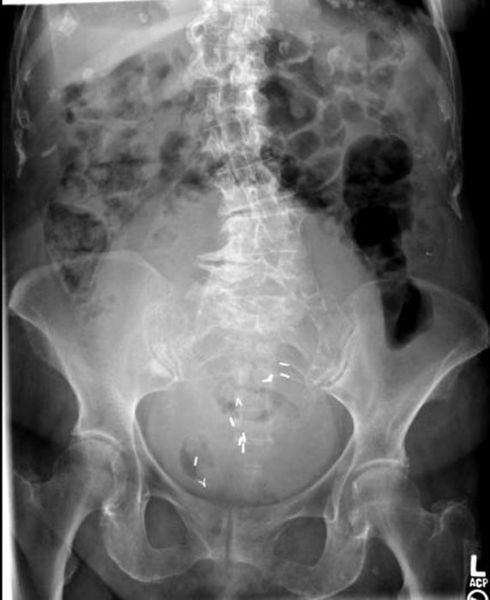Neurogenic bladder
| https://https://www.youtube.com/watch?v=ZLuQmtTXrtk&t=6s |350}} |
| Neurogenic bladder | |
| ICD-10 | N31.9 |
|---|---|
| ICD-9 | 596.54 |
| DiseasesDB | 30837 |
| MeSH | D001750 |
For patient information page, click here
Editor-In-Chief: C. Michael Gibson, M.S., M.D. [1]
Overview
Neurogenic bladder refers to dysfunction of the urinary bladder due to disease of the central nervous system or peripheral nerves involved in the control of micturition.
Causes
Neurogenic bladder is often associated with spinal cord diseases, injuries, and neural tube defects including spina bifida. It may also be caused by brain tumors and other diseases of the brain, and by peripheral nerve diseases. It is a common complication of major surgery in the pelvis, such as for removal of sacrococcygeal teratoma and other tumors.
Diagnosis
Treatments
Neurogenic bladder usually causes difficulty or full inability to pass urine without use of a catheter or other method. Consequently most treatments involve creation of a stoma that is continent and readily accepts a catheter. These are known as Mitrofanoff mechanisms. Anticholinergic medication may also be used.
Function of the stoma may be augmented by periodic injections of botulinum toxin to relax one of the two sphincters involved in normal urination.[1] The effect is longer lasting with botulinum toxin type A than with type B.[2] This use of botulinum toxin is discussed at length in the French medical literature.[3][4][5][6][7]
References
- ↑ Akbar M, Abel R, Seyler TM, Gerner HJ, Möhring K (2007). "Repeated botulinum-A toxin injections in the treatment of myelodysplastic children and patients with spinal cord injuries with neurogenic bladder dysfunction". BJU Int. 100 (3): 639–45. doi:10.1111/j.1464-410X.2007.06977.x. PMID 17532858.
- ↑ Hirst GR, Watkins AJ, Guerrero K, Wareham K, Emery SJ, Jones DR, Lucas MG (2007). "Botulinum toxin B is not an effective treatment of refractory overactive bladder". Urology. 69 (1): 69–73. doi:10.1016/j.urology.2006.09.005. PMID 17270619.
- ↑ Game X, Karsenty G, Chartier-Kastler E, Ruffion A (2007). "[Treatment of neurogenic detrusor hyperactivity: enterocystoplasty]". Prog. Urol. (in French). 17 (3): 584–96. PMID 17622095.
- ↑ Karsenty G, Corcos J, Schurch B, Ruffion A, Chartier-Kastler E (2007). "[Pharmacological treatment of neurogenic detrusor hyperactivity: intradetrusor botulinum toxin A injections]". Prog. Urol. (in French). 17 (3): 568–75. PMID 17622092.
- ↑ Chartier-Kastler E, Ruffion A (2007). "[Treatment of vesicoureteric reflux and neurogenic bladder]". Prog. Urol. (in French). 17 (3): 470–2. PMID 17622079.
- ↑ Chartier-Kastler E, Comperat E, Ruffion A (2007). "[Disorders of bladder compliance and neurogenic bladder]". Prog. Urol. (in French). 17 (3): 442–7. PMID 17622074.
- ↑ Chenet A, Perrouin-Verbe B, Le Normand L, Labat JJ, Brunel P, Lefort M, Mathé JF (2007). "[Efficacy of repeat injections of botulinum A toxin to the detrusor in neurogenic bladder overactivity.]". doi:10.1016/j.annrmp.2007.03.019. PMID 17490775.
